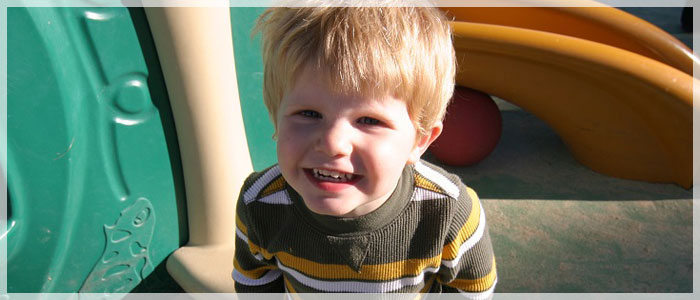
Preschoolers are most responsive to “hands-on” activities. Our teachers accept that and design their classroom spaces with “learning stations” at which children can choose the activities they most enjoy. Our high-quality staff rotates and adds materials frequently to maintain and extend the child’s interest. Young children seem to learn best when trained teachers build on the interests and abilities of the children. This reflects the currently recognized theory that endorses non-pressured, child-centered activities guided by an adult with a solid child development base and strong problem-solving skills. In such a program, parents truly become partners with the professional staff. Information or discoveries about the child’s development are mutually shared, resulting in a program tailored to the individual child.
The preschool curriculum includes activities centering on communication, science, math, social studies, music, art, and large and small motor development. An enrichment program that includes walking field trips and visitors is offered. Dramatic play opportunities reinforce learning of practical life experiences.
LANGUAGE/COMMUNICATION
The whole language approach is our model for the classroom. This is one in which children are exposed to print and language that is integrated into each activity center. We also follow a phonics-based reading approach. This approach is introduced through age-appropriate direct teaching in both large and small groups.
SCIENCE
Open-ended questions by high-quality teachers help the children learn how to question. . . how to be thinkers. Hands-on activities include using simple machines, sensory table play, plant and animal life. Nutrition awareness and cooking activities are offered.
MATH
Activities include concepts of introductory geometry, classification, sets, number, quantity, length, and weight, use of simple graphs, simple addition/subtraction (more/less), and money.
SOCIAL STUDIES
Learning about the “world around us” is the focus of this curriculum area. Walking field trips and studies of occupations are included.
MUSIC
Exposure to and involvement with simple rhythm instruments is part of our music program. Rhythms are also “practiced” by the learning of songs and finger plays. Guest musicians visit the children to give exposure to a variety of sound and diverse musical styles. Tone, volume, and pitch awareness is part of the music curriculum.
VISITORS
Classroom visitors might describe a career or hobby. They could include business representatives or parents describing hobbies.
ART
Exploratory, sensory art activities help the child experience a variety of media. Collages and creating mobiles are offered. Paints, chalk, pencils, paper, markers, glue, paste, and play dough are all available in a “free choice” activity center for the children to use as they wish. Our focus is on the process, not the product.
FIELD TRIPS
Occasional walking trips are taken by the preschool groups to nearby places, such as a local business of interest. Exposure to adult occupations or a behind-the-scenes look at a grocery store are wonderful learning opportunities for children. Leaving school grounds to observe nature in the community can feel like an exciting “safari” to young children. Walking trips also give teachers an opportunity to talk with children about walking safety and being polite and courteous in their community.
LARGE MOTOR
Movement activities, including free dance, parachute handling, climbing, crawling, running, and balancing, are just a small part of the large motor program.
SMALL MOTOR
From the handling of simple tools to completing pegboards, children are continually offered opportunities to develop their smaller muscles, an important prerequisite for writing.
DRAMATIC PLAY
From “playing house” to being a cashier in a pretend grocery store to repairing cardboard automobiles in a child-sized garage, the children are able to practice roles that productive adults hold.



 (803) 419-8858
(803) 419-8858